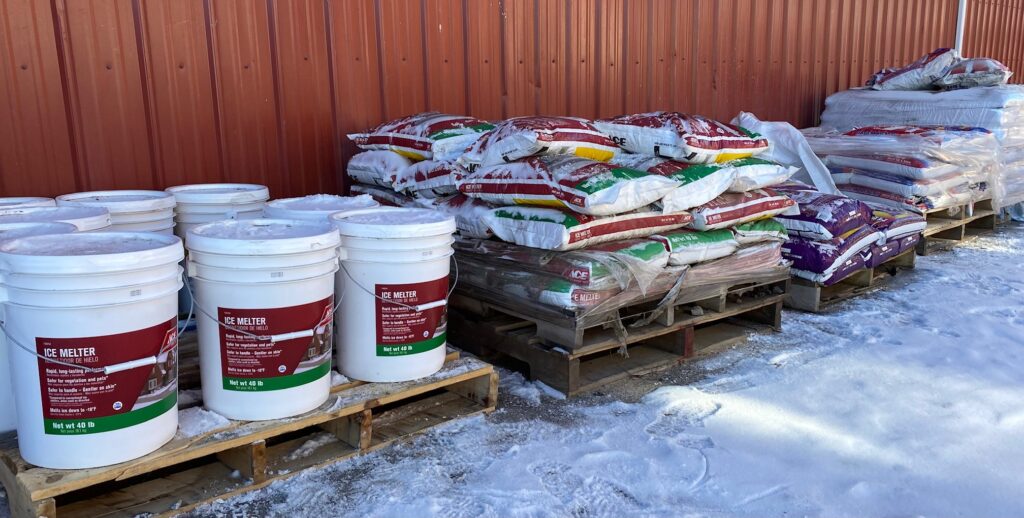
Ice is one of the perils of winter here in Western New York: ice can build up on rooftops and in gutters, cause accidents on the roadway, and make sidewalks and steps unsafe for walking. Icy conditions dramatically increase slip and fall injuries, which millions of Americans suffer annually. When it comes to melting away ice and improving safety on sidewalks and driveways, most homeowners turn to rock salt or ice melter.
While the terms rock salt and ice melter are often used interchangeably, they are different products, and it’s important to understand the pros and cons of each before choosing a product to use around your home.
What is the difference between rock salt and ice melter?
When shopping for ice melting products, most customers use “rock salt” as the generic term to describe what they are looking for. But rock salt, specifically, may not always be the best solution. Ice melter offers benefits that a homeowner might value if they understood the difference. But what exactly is the difference between rock salt and ice melter? The difference is in the ingredients.
All ice melting products list their Active Ingredients somewhere on the label (usually on the back). The ingredients are listed in order of concentration, with the highest concentration being at the top. They are listed by their common name and a 10 digit CAS (Chemical Abstracts Service) Registry Number. So, if you remember a little bit of high school chemistry, you can usually figure out the difference between the ice melting products you are looking at.
Rock salt, as shown in Image 1, is 100% sodium chloride. Sodium chloride (or NaCl) is straight, unadulterated salt. The “rock” part of rock salt describes the size of its crystals, and differentiates it from other types of salt, such as sea salt or very fine table salt.
Ice melter also contains sodium chloride. But the salt is often augmented by other ingredients, such as magnesium chloride and Hexahydrates, as shown in Image 2. These minerals and chemicals work together to outlast and outperform pure sodium chloride.
Other ice melting products, such as those designed to be safe for pets, may add or omit ingredients as needed.
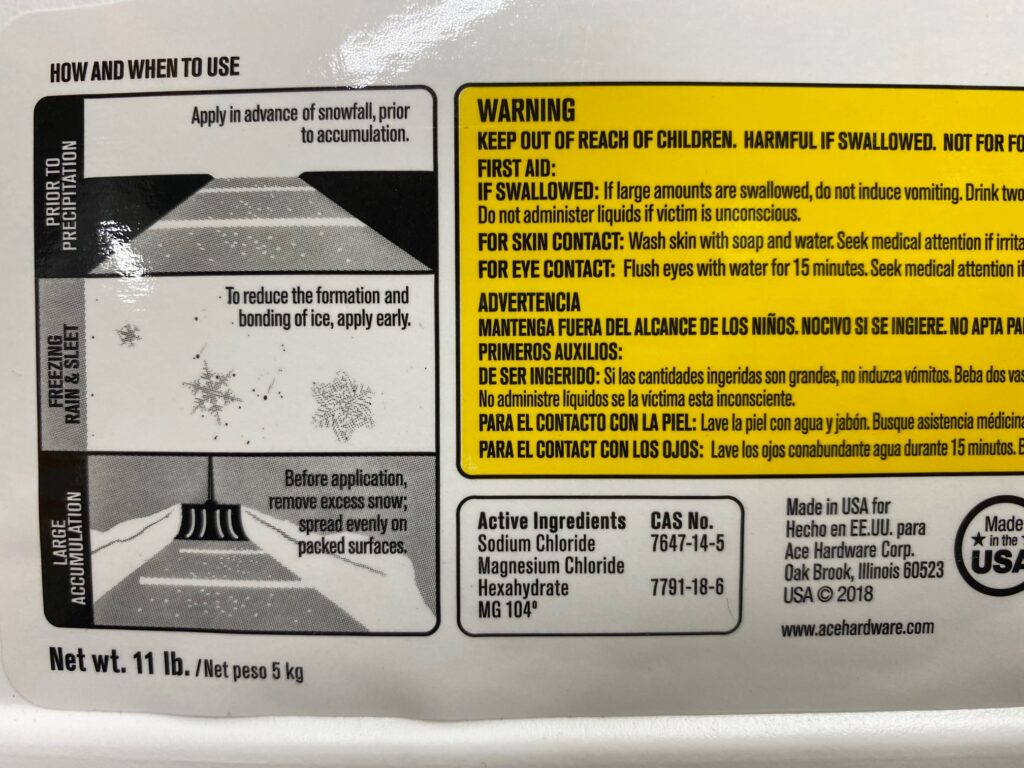
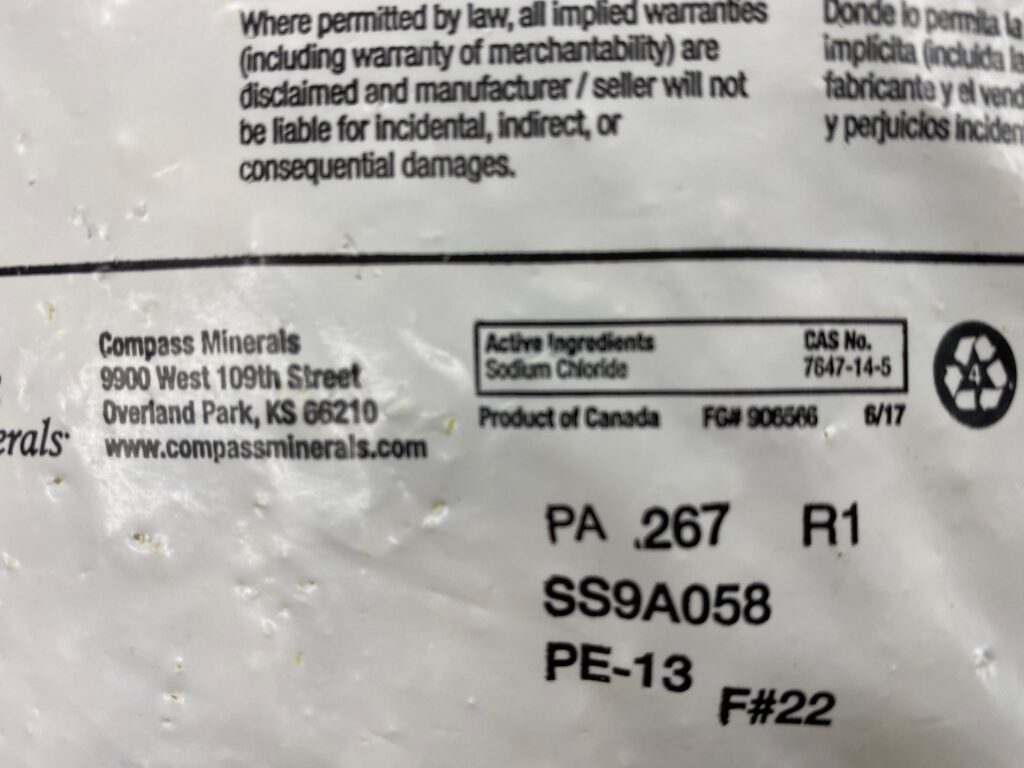
Which product should I use: rock salt or ice melter?
Whether you choose rock salt or ice melter will depend on the application and the needs of your family. Here are some things to consider when making your decision.
Rock Salt
Rock salt is cheaper to produce and therefore more affordable. This makes it a great choice for homes or businesses that have a lot of ground to cover. The larger crystal size also provides extra traction, especially on unpaved surfaces.
Rock salt is very abrasive, and may damage some surfaces. It can also contribute to cracks in blacktop asphalt and concrete. Rock salt is not safe for family pets, and will also harm delicate plants.
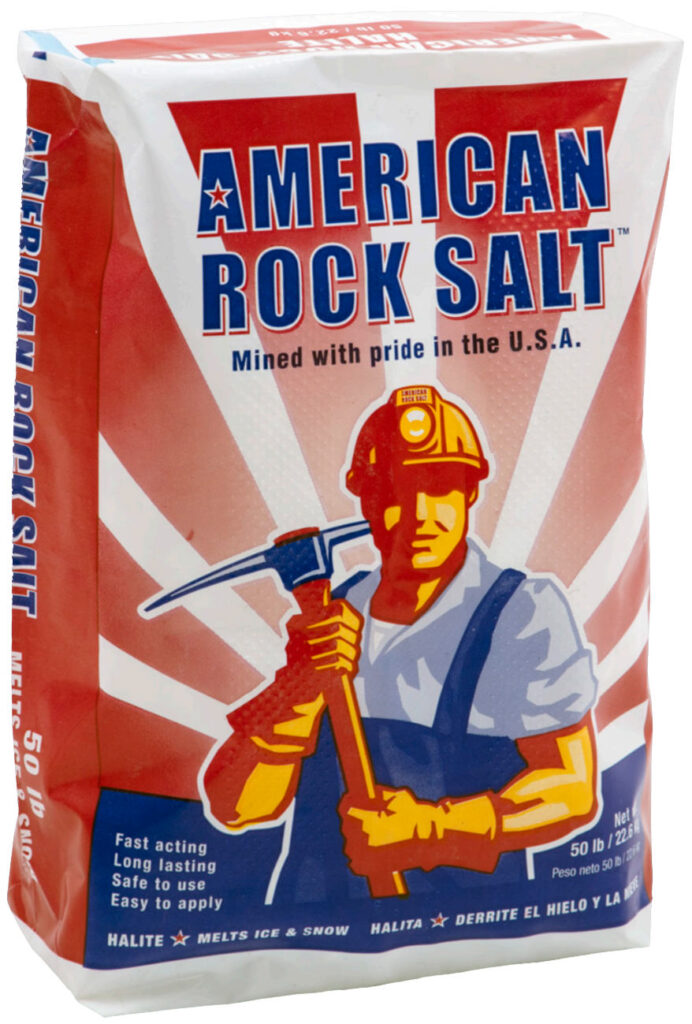
Ice Melter
A key benefit of ice melter is that it continues to work even below freezing, so it does not need to be applied as liberally or as often as rock salt. It is easier to disperse with a spreader due to its smaller crystal size.
Like rock salt, ice melter can also damage some surfaces. It is usually too expensive to be used in large areas like parking lots.
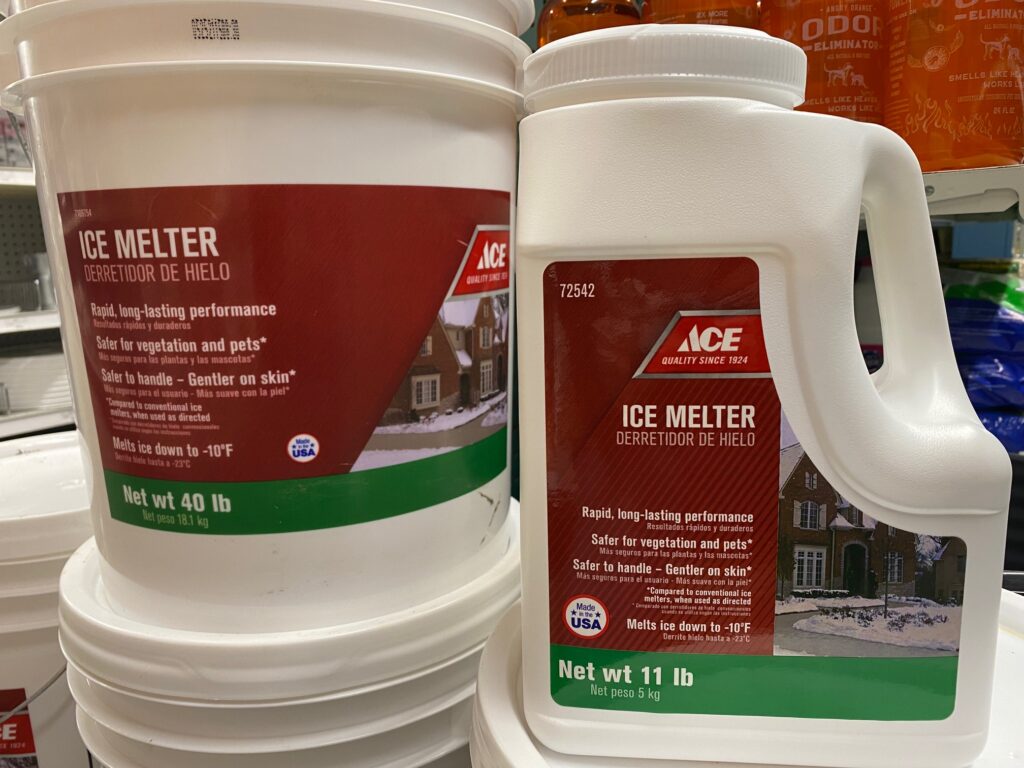
Other Ice Melter Options
If you have pets, look for an ice melter that is specifically labeled as safe for pets. Many ice melting products can burn animal footpads, and are harmful if ingested during grooming.
Ice melters made of calcium chloride are considered safer for concrete. Concrete is damaged when ice and snow melts into fissures and refreezes, gradually creating sizable cracks. Ice melting products that interrupt this cycle are the best option for concrete. (Please note that ice melting products should never be used on new concrete less than a year old.)
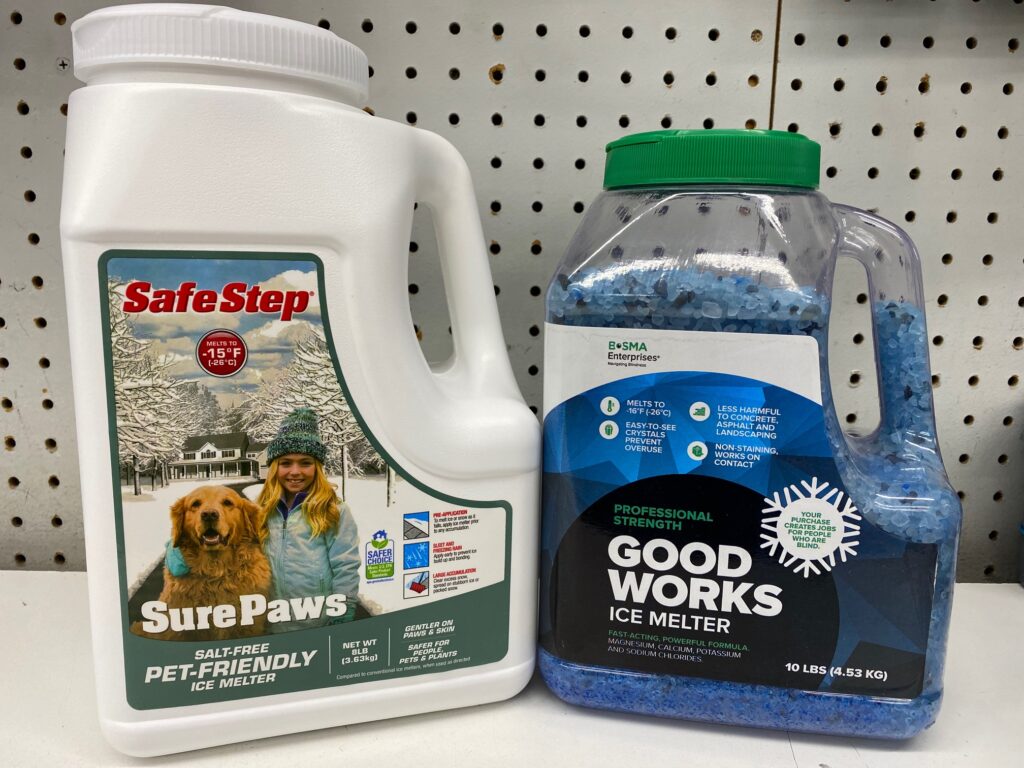
Conclusion
When shopping for rock salt or ice melter, the most important thing is to know what your particular needs are and to read labels. Choosing the right product and applying it as directed will keep your sidewalks and driveways free of ice and help prevent dangerous slips.
